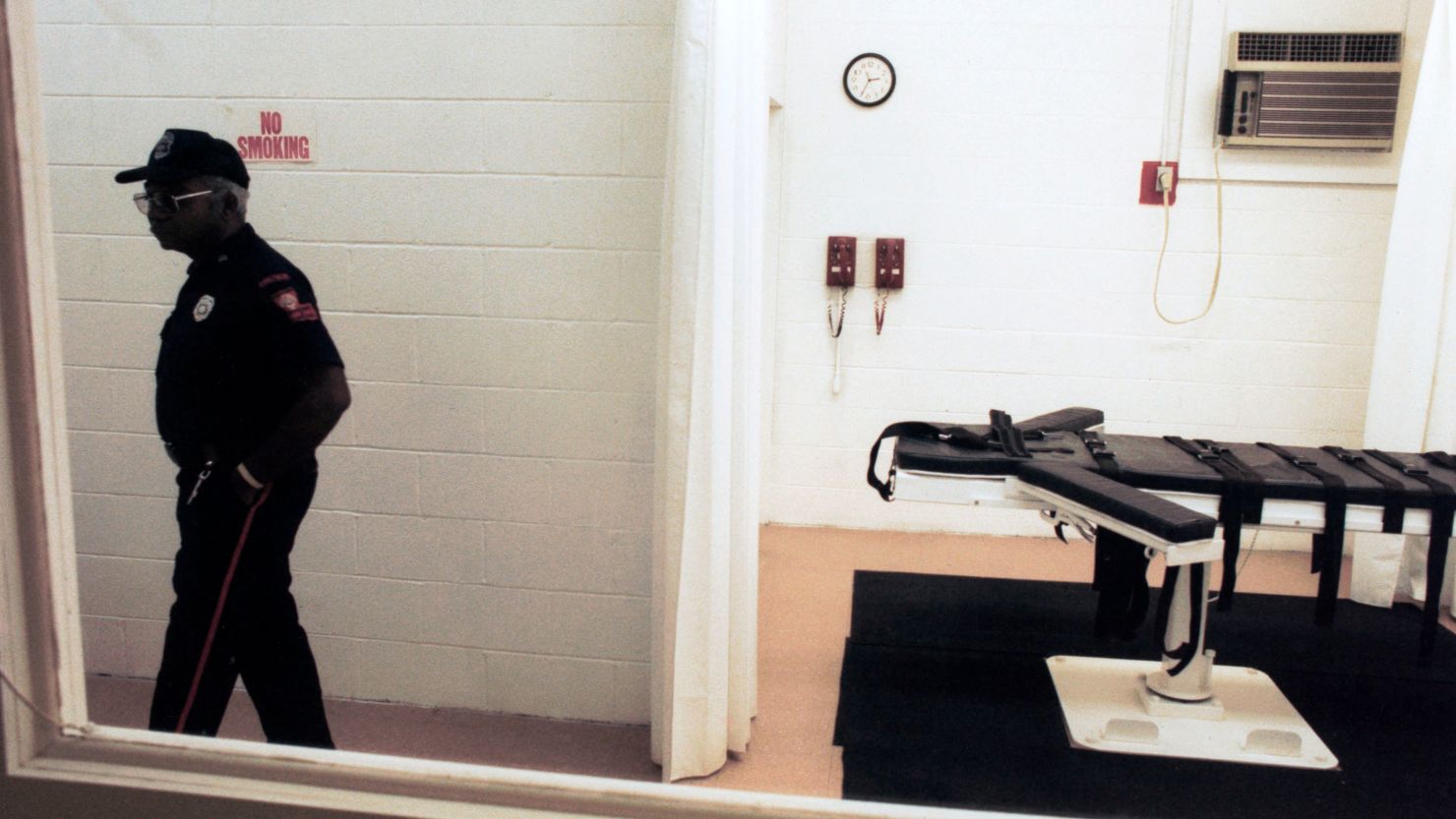Editor’s Note: Jonathan Eig is a journalist and author. His most recent book is “King: A Life.” The views expressed here are his own. Read more opinion on CNN.
The coroner wore a tuxedo. The condemned man wore blue jeans and a white short-sleeve shirt. Though his ankles were no longer shackled, he still took baby steps as he approached the electric chair. The yellow cinderblock walls of the execution chamber looked and smelled as if they’d been freshly painted.

In May of 1990, I watched through a window of a building at Angola State Penitentiary as Dalton Prejean became one of the last criminals put to death by electrocution in the state of Louisiana. I saw his chest heave, his fists clench and his right wrist twist outward. A spark and a puff of smoke shot from the electrode attached to his left leg.
Over the years, I came to regret my decision to witness an execution. It made me feel complicit, ashamed, a cog in a machine that dehumanized the process of death. But recent events have forced me to reconsider.
Last month, Alabama became the first state to use nitrogen gas to execute a prisoner. A small group of people, including five journalists, witnessed the execution of convicted murderer Kenneth Eugene Smith. They were not allowed to wear watches, to carry phones or even to use pen and paper to make notes.
Some of the witnesses said Mr. Smith tried to hold his breath. One said he struggled for four minutes against the straps that held him to his gurney and appeared to remain conscious for another two to three minutes. The commissioner of Alabama’s prison system said the prisoner “struggled against his restraints a little bit” but “nothing was out of the ordinary of what we were expecting.”
Witness statements matter. The witness of Sister Helen Prejean (no relation to Dalton) helped move public opinion when she used her experiences at Angola to write “Dead Man Walking,” a book that became a movie.
In 1990, when I reported in The New Orleans Times-Picayune that I had seen that spark and a puff of smoke from the area where electrodes had been attached to Dalton Prejean’s leg, lawyers and prison journalists seized on the detail and investigated further. Attorneys for one man on death row claimed that the electric chair caused burning, mutilation and torture. The Angolite, the Louisiana State Penitentiary’s inmate-run news magazine, published photos revealing the seared flesh of a man who’d died in the chair. Soon after Prejean’s execution, the Louisiana legislature passed laws mandating lethal injections for executions.
Louisiana hasn’t executed anyone since 2010, in part because state officials have been unable to acquire the chemicals needed for lethal injections. Now, Gov. Jeff Landry, who campaigned on a promise to bring back the death penalty, is calling for a special legislative session beginning February 19 to enact a bill making lethal injection, nitrogen asphyxiation and electrocution legal methods of execution. The governor’s proposed legislation would also seal records related to the drugs and materials used in executions, which could be perceived as an attempt to limit scrutiny of the process.
Around the time I witnessed Prejean’s execution, roughly 80% of Americans said they approved of the death penalty, according to a Gallup poll. Now, only 53% say they support it, and about half of those surveyed say they believe it is applied unfairly.
Since the 1990s, Americans have grown more skeptical of capital punishment, coming into alignment with much of the rest of the world. Their views seem to be rooted in morality, in the belief that its legality depends on its respect for human dignity. Public opinion has no doubt been shaped by reports from witnesses like me who have provided accounts indicating that despite all our advances in technology we have not yet found a humane method for killing.
That Landry would seek to reinstitute the electric chair despite this trend should come as no surprise. Politicians often play to fear and anger. But fear and anger are not the only emotions at play. Americans live now with the greater awareness that innocent people have been convicted and executed for their crimes. Private cell phones and body cameras on police have shown us that official accounts of incidents can’t always be trusted. We also live with the awareness that legal standards and community standards change over time while executions remain final in their judgment.
Prejean, who was convicted and executed for the murder of Donald Cleveland, a Louisiana state trooper, was 17 at the time of the murder. In 2005, the Supreme Court made it unconstitutional to execute people who commit crimes before the age of 18. The court held that executing young criminals violates “the evolving standards of decency that mark the progress of a maturing society,” and noted that American society had come to regard juveniles as less culpable than adult criminals. Today, Prejean would not have been executed.
As our society matures, we should resist the temptation to return to crude forms of punishment. If we can’t, we should demand accountability from the officials carrying out executions. We should permit witnesses to carry pens, paper and cameras. As long as the death penalty remains a part of our system of justice, we shouldn’t shrink from looking at it.




